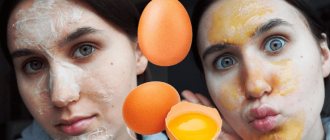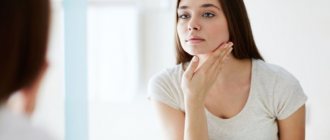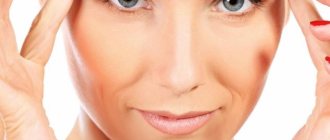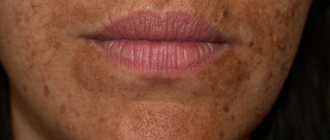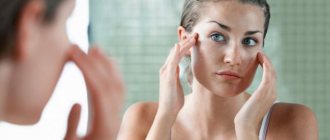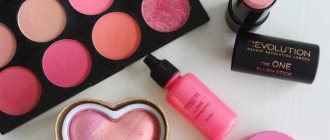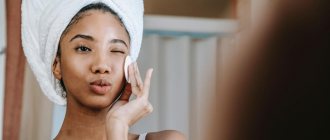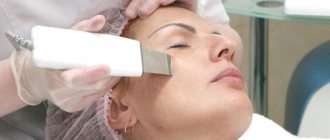Dry skin
Dry skin is matte, delicate and thin. It is not prone to rashes and pimples, but in the absence of adequate care, peeling, irritation, a feeling of tightness and wrinkles may occur. The fact is that this type of skin lacks lipids, which are necessary to retain moisture and protect against the negative influences of the environment.
How to care for dry skin
Dry skin is sensitive to temperature conditions and requires not only hydration, but also increased nutrition, especially in the cold season. It is also important to choose skincare products that do not contain alcohol. Otherwise, cosmetics will dry out the skin even more.
Example of a care plan
- 1. Washing - washing cream with cotton oil 2. Toning - moisturizing spray with hyaluronic acid 3. Moisturizing - active moisturizing cream 4. Intensive care (1-2 times a week) - restoring mask with prebiotics
What does daily facial skin care consist of?
Daily care for different skin types includes several mandatory procedures:
- Cleansing. Cleansing products are selected individually based on its type. It is better to give preference to products with a neutral pH without surfactants (alkalies).
- Exfoliation. Tonics, due to their mild chemical action, dissolve dead cells on the surface of the skin, renew the skin, and restore radiance and freshness to the skin.
- Hydration. The remedies work in two ways. And, as a rule, modern creams combine both options. The first method is water retention. Glycerin and hyaluronic acid in creams retain water molecules. The second method is to “lock” the water. Oils and silicones create a protective film on the surface of the skin that prevents water from evaporating. Step-by-step daily facial skin care, regardless of its type, necessarily includes the use of creams. The texture of the moisturizer depends on your skin type. The drier the skin, the denser the cream should be. It is also worth considering the advice of a cosmetologist on caring for the skin around the eyes. The skin in this area is thin and requires delicate care.
- Protection. Taking care of your skin every day involves using products with ultraviolet protection. They are applied before going outside to exposed areas of the body.
Oily skin
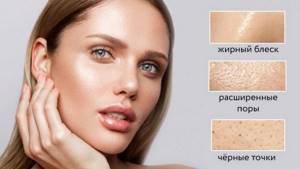
Oily skin has enlarged pores that quickly become clogged, leading to inflammation and blackheads. With this type of skin, the sebaceous glands work too actively, and an oily sheen appears a couple of hours after washing. At the same time, oily skin has an obvious advantage - it ages slower compared to other types.
How to care for oily skin
Oily skin requires gentle but intense cleansing. Moisturize your face every day and exfoliate a couple of times a week. At the same time, it is important not to overdo it and not to try to cleanse the skin until it’s squeaky clean - this can disrupt its natural hydrolipid balance and increase the functioning of the sebaceous glands.
Example of a care plan
- 1. Washing - washing gel with activated carbon2. Toning - toner with salicylic acid3. Moisturizing - balancing cream with a mattifying effect 4. Intensive care (1-2 times a week) - cleansing mask with clay and AHA acids
How to make your facial skin young and perfect at home - mask recipes for different types
Beautiful skin requires careful care. And masks fully help eliminate any problems. Dry skin is moisturized, oily skin is dried, nourished, whitened. It all depends on the chosen goals. The main thing is to use only fresh products. If you suddenly feel discomfort, wash off the mask. You may be allergic to one of its ingredients.
For normal type
- Mix the honey and soy flour with your hands. Apply the mask for a while and remove with cotton wool and water.
- Unifying oil: jojoba, lemon, rose. Apply for 15 minutes.
- Grind currants, strawberries, peach and one spoon of hemp oil in a blender. Pour it all into a mold and freeze until frozen. Rub your face with these cubes before washing your face.
- A mixture of chopped carrots and cream nourishes well.
For oily type
- Using a blender, grind nettle and plantain in equal proportions. Add one spoon of lemon juice. Apply to the body and hold for about 15 minutes.
- Finely chop the sorrel leaves and combine with fresh carrots. 20 minutes will be enough for effective action.
- Add whole lemon to the hot chamomile tincture. Let it brew and cool. Here are two tablespoons of camphor and vinegar. Apply to face.
- Mix a packet of yeast with three pinches of plantain leaves and a spoonful of fermented baked milk. When the mixture dries on your face, massage the area and rinse off first with warm water and then with cooler water.
You can make a great face mask yourself
For dry type
- Mix coffee grounds and full-fat cottage cheese. Keep the mixture on your face and then rub it into your pores with your fingertips. This universal product is a good mask and at the same time a natural scrub.
- Brew pharmaceutical chamomile in the usual way, strain. Mix a teaspoon of butter with honey, the resulting decoction and glycerin. The mask is ready for use.
- Combine barley flour with melon or apple juice. This also includes grape seed oil and sour cream. Ready!
For mixed type
- Mix cottage cheese and fruit and berry puree in equal proportions. Your skin will appreciate this “dish”.
- Crush the strawberries and add salt, cottage cheese and unrefined sunflower oil. Apply to body individually (avoiding T-zone).
- Mix peach seed oil, a tablespoon of cocoa (powder) and milk.
- For four tablespoons of kefir, add a few potato starch, a spoonful of green tea and your favorite oil of choice.
Tip: mixtures based on oatmeal and milk are very healing.
The following video will help you learn how to make your facial skin perfect and well-groomed at home in just a week:
Normal skin
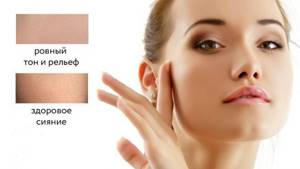
An even complexion, unpronounced pores, a healthy blush - all these are signs of normal skin. This is the most desirable skin type for women, but it is not common. Thanks to the proper functioning of the sebaceous glands and normal blood circulation, skin cells receive important vitamins and microelements in the right quantities.
How to care for normal skin
Despite the fact that normal skin is not picky and has no obvious problems, daily comprehensive care is still necessary. Regular moisturizing plays an important role, which will help the skin remain young and tight for a long time. Also, do not forget about other basic stages of care: cleansing and toning.
Example of a care plan
- 1. Washing - foam with snail mucin and green tea 2. Toning - floral lifting toner 3. Moisturizing - multi-face cream with peptides and antioxidant complex 4. Intensive care (1-2 times a week) - rejuvenating mask with complex mineral mud
How to achieve perfect skin in a month?
1). The most common skin problem is acne!
The very first thing that catches your eye every morning when you approach the mirror is some unevenness on your face. Most often these are pimples. They can be white or red. In most cases, they are itchy, and the problem is that many people try to press and scratch them, but, unfortunately, this only further spoils the appearance of the skin. And no matter how you fight them, they appear again and again.
Most often, acne occurs in adolescence, however, this problem is also observed in adults. Unfortunately, you can also find acne on a seemingly attractive woman, and this is very unpleasant.
7 most common skin manifestations
2). Acne is a little black nuisance on your face.
These are small black dots that can be seen on the face. They don't stick out, but they are very noticeable. Lots of small black dots. What is it?
These are, after all, clogged pores. Even though the composition of this substance is not so complex - it is a mixture of sebum, sulfur and dirt that we bring from the street - this does not mean that the pores can be easily and simply cleaned. Washing with water doesn’t help, soap doesn’t help, but somehow I want to get rid of it. Getting rid of acne is not only possible, but also necessary! And we will find out about this a little later: continue reading this article!
3). Oily skin is too shiny.
Many people who face the problem of acne and acne have oily skin. It is glossy, shiny, and has an unpleasant appearance.
Most often it is very porous and uneven, and it is simply unsightly. In addition, oily skin sweats quickly and gets even more dirty - a lot of blackheads and pimples appear on it, which causes additional inconvenience.
4). Dry skin - fear of touch.
Unlike those with oily skin, people with dry skin have other problems; thin, delicate skin suffers from a huge number of irritating factors. This is the sun, this is the wind, cold or hot. It could be the touch of a washcloth... Even a light massage sometimes turns out to be irritating! Dry skin is prone to redness, irritation, and peeling, when simply pieces of skin begin to lag behind the surface and greatly interfere with the appearance.
Very often, people with mixed skin types may notice that they have areas of both oily and dry skin, which makes caring for it more difficult.
5). Loose skin - old age is evident!
As sad as it may be, for many older women, the skin on their face and body becomes very flabby or, more simply, wrinkled. And this is not due to age itself, it is due to the fact that the skin loses its elasticity and natural moisture.
Normally, the skin of both women and men should shrink back after stretching, but due to certain circumstances this does not happen. And then we can observe sagging corners of the mouth, sunken cheeks, an old woman’s neck with a double or triple chin.
Another indicator that your skin has lost its natural elasticity is the back (inner) part of the shoulder area: when we raise our hand to wave “Hello!” — with regret we understand that our skin underneath is like a rag. Maybe that's why we started meeting in person less?
6). Orange peel (cellulite), or why we wear trousers.



Everyone has fat deposits; it is simply an obligatory layer between muscles and skin. It is this layer that saves us from serious damage during impacts, stores nutrients (and, during strict diets, it is much more active!), but it is in this layer, unfortunately, that stagnation most often occurs: blood, lymph.
Blood cannot deliver nutrients to the cell, and it “thinks” that it needs to make a reserve for the future, and lymph cannot remove toxins, waste products of the cell, which, accumulating in the intercellular space, do not allow cells to grow evenly.
It is the uneven, irregular growth of adipose tissue that causes that very orange peel - this is cellulite. That is, not a lot of fat, but rather improper growth of adipose tissue. I repeat - a person can be thin, but he can have cellulite. The deposition of cellulite usually begins with the onset of hormonal development, i.e., from the age of 13-15, when full puberty occurs. Almost everyone has cellulite.
7). Gray skin color - or “gray mouse”.
People who work hard often notice that their skin takes on a pale, grayish-greenish tint. Not only that, but bags under the eyes perfectly “emphasize” all the advantages of office beauties!
Pale gray skin with a greenish tint is something that scares us since childhood: “Oh, how pale you are! How green you are!” But, it’s one thing when you are a small child, and another thing when you are already a beautiful young woman, but, for some reason, with a very gray faded skin color, so to speak, a “gray mouse.” Of course, she loses very much to women with a blush, a warm, pleasant complexion and velvety skin.
7 main causes of skin problems
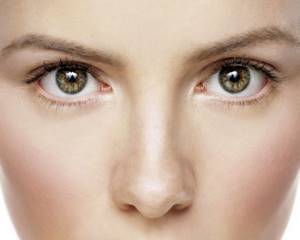


They are looking for a miracle cure to achieve perfect skin, but often do not know the reasons for the occurrence of certain manifestations. And miracle lotions and pills don't help. So let me tell you what exactly is causing problems on your skin.
1). Poor nutrition.
And not just nutrition itself, but in conjunction with diseases of the gastrointestinal tract. Let's see how it all happens!
The most harmful foods that people scare us with are fatty, salty, fried, sweet and starchy foods. All of the listed foods are excluded from the diet in any diet, but often this does not help. After all, food itself wouldn’t be so scary if it was digested properly! If nutrients were fully absorbed into the blood, and everything unnecessary would be eliminated naturally.
Usually, starting from early childhood, we are taught to eat food that is not quite right, and therefore the body cannot always remove the amount of harmful substances that enter the body when overeating, not combining foods, or not following the natural rhythms of the body. First, disturbances in peristalsis occur, as a result of which these substances settle on the intestinal walls, preventing the absorption of nutrients, then, for better digestion of food, the liver, spleen, and pancreas begin to work hard. At the same time, harmful substances also enter the blood and poison the body. Then the kidneys suffer, which normally cleanse the lymph from cell waste products, and in case of gastrointestinal disorders they must work to cleanse them of harmful substances, and the liver, which cleanses the blood, also cannot cope.
And what way out does the body find if the main elimination systems fail? Another elimination system is turned on - the skin! This is the largest organ in area - the skin.
That is why all problems related to nutrition come to light. Well, some on the thighs, some on the arms, some on the stomach. For whom - how, where the skin is thinner, where it is easier to remove toxic substances out, pimples, blackheads and some other disorders appear.
In connection with this, we begin to suffer, and very often we suffer so much that out of grief we begin to eat all sorts of sweets and nasty things in order to somehow eat away our grief!
In addition to nutrition, bad habits also have a negative effect: alcohol, which dilates and then sharply constricts blood vessels. By expanding, it allows you to absorb more toxic substances, and by narrowing, it worsens the permeability of blood vessels, which means that the blood cannot deliver useful substances to the cells to give a pleasant color and health to our skin.
And also smoking, which pollutes the lungs, causing little oxygen to enter the blood, which prevents cells from receiving nutrition.
2). Hormonal disorders.
Many people do not encounter problems with acne and acne until puberty, this is the case from 10-15 to 20 years old. That very adolescence when boys and girls really want to meet people, really want to communicate, but at this time, as luck would have it, they have A very large number of pimples and blackheads appear. The skin may become oily, or vice versa, dry, sensitive with red spots from excitement. Unfortunately, it is not only teenagers who experience such violations.
Women monthly observe unpleasant changes in their skin associated with the premenstrual state; often the skin is covered with pimples. And it’s good if you don’t have this, I’m very happy for you! But most often this happens regularly.
In addition, there are indeed disorders - this could be a dysfunction of the thyroid gland, or the ovaries, but they cause the production of some substances that stimulate the production of sebum, roughening of the skin, or, conversely, increased sensitivity. Whereas during menopause, on the contrary, the production of female hormones stops, as a result of which the skin loses its elasticity and beauty.
3). Poor blood supply.
One of the main reasons why we can observe a gray complexion, loose, inelastic skin, dry skin, including acne and pimples, is poor blood supply. Moreover, by blood supply I mean not only the blood itself, which delivers nutrients to the skin to every cell, to every organ and every cell of this organ.
I’m also talking about the lymphatic system, which acts as a “sewer” in our body. Normally, all cell waste products, toxins, and substances that enter through the skin should be eliminated through the lymph, through the kidneys, and then through urine, naturally.
As a result of poor blood supply and lymphatic drainage, the cell not only “eats” little, but it also has nowhere to remove the breakdown products of these substances, waste. And naturally, the well-being of each cell and organ as a whole, in this case the skin, leaves much to be desired. And as a result, we see all these troubles on our skin.
4). Physical inactivity is a lack of movement.
Most women now no longer do the work that they did in ancient times - we don’t mow, we don’t sow, we don’t plow, we don’t run with cattle from hill to hill, we don’t wash clothes in the river, we don’t dry them on a line somewhere, No.
A machine washes, cows graze and feed somewhere on a farm, various crops are sown and mowed by grain growers, this no longer applies to us. What are we doing now?
It’s good if we go to the gym or fitness club, it’s good if we do exercises, but most often we sit in the office on the fifth point and the maximum action is to move the mouse, i.e. We move the fingers of our right hand slightly. Sometimes we type, sometimes we write something, sometimes we get up to drink a cup of coffee or go to move from a chair to a sofa or from a sofa back to a chair. That's all the movements we do during the day.
Our muscles are a pump. And, unfortunately, if the pump is not used, then, naturally, it does not work. If we compress and unclench our muscles, blood begins to flow through the vessels faster, the heart begins to work better, it begins to pump blood at a higher speed, and accordingly the lymph also begins to move at a higher speed. More oxygen, more nutrients are delivered to the cells, they begin to consume these substances more actively and more actively begin to remove all these toxins.
Moreover, the muscles work not only with the vessels of the circulatory system, but also with the lymphatic system. Those. The more active and more often, the more regularly we engage in physical exercise, the better the blood supply and, accordingly, the cleansing of waste products.
5). Bad environment and dirty hands.
Of course, pimples and acne do not appear out of nowhere. And one of the main reasons is environmental pollution, dust in the air, fatty, sebaceous secretions with which the skin tries to protect itself from the sun, from the wind, from some irritating factors. After all, sebum is not evil. Sebum is a protection; it is the most natural cream that the body itself applies to its surface without our conscious participation.
Unfortunately, there are so many irritating factors that very often this excessive oiliness, and even more so together with dust and dirt, creates a terrible mixture of substances that clog the pores through which the skin breathes. Again, natural processes are disrupted. Of course, in a “dirty environment” we often have dirty hands. Just imagine how our hands can remain clean when throughout the day we take tickets, money, hold handrails with our hands, press buttons in the elevator, take keys, drop them and pick them up again, take pens, pieces of paper, press computer buttons... Huge the number of touches on objects that are never or very rarely wiped. And if they do wipe it, it’s unlikely to be that sterile, and at least, it doesn’t remain sterile for a long time.
And you yourself know that we touch our face and skin quite often, without thinking at all about how dirty or clean our hands are.
6). Stress.
Stress has become a fairly common occurrence in our lives, unfortunately, this does not make it any more useful.
Stress is a state when you want to scream, hit, when you want to fight back or cry, complain. But most often we do not have such an opportunity - we simply cannot afford to do it! Or simply there is no time, no one to share with, no one to be angry with, or no one to beat. Again, I repeat, in our modern world this is not accepted.
And we deal with the consequences of this inability to somehow pour all our emotions out. Just think about the meaning of the word “emotion” - it is an outward movement (e - outward, moveo - movement). But we cannot pour these emotions out, and therefore they actually accumulate inside the body, by squeezing the muscles, we restrain ourselves from some actions and, without noticing it, we narrow our own blood vessels, we narrow the lymph vessels, and in As a result, we again get poor blood supply and lymphatic drainage.
Actually, this is precisely why stress is scary, not by its very presence, but by its consequences.
7). Incorrectly selected cosmetics.
How often do you choose cosmetics for your skin type? How often do you check if you are allergic to certain substances?
Very often we buy cosmetics simply because we like the label, because a friend recommended it, because there is a well-known company or a big discount on purchase, some kind of promotion. And we grab these tubes and jars and smear a huge amount of “makeup” on ourselves, which worsens the condition of our skin, which clogs the pores.
If this is a face, then these are all kinds of foundation creams that have a greasy base, and it clogs the pores so much that they cannot then shrink back after this foundation is washed off. This is where we get enlarged pores, dirt gets in there faster, blackheads and pimples form, they try to paint them over and cover them up... and this becomes a chain reaction that simply cannot be stopped.
In addition, there are substances that cause irritation or some kind of reaction in the body that we may no longer be aware of.
For example, one of my friends struggled with hair loss for a long time. And, as it turned out after 6 (!) years, it turned out that her skin reacts so strongly to sodium sulfate - a foaming substance used in shampoos, liquid soap, toothpaste, but her scalp, with regards to hair, is very reacted strongly to this same sodium sulfate, causing irritation and hair loss. There was no reaction to the lighter version, sodium coco-sulfate.
Very often we do not observe, we do not look at how our skin behaves, how it reacts to this or that cosmetic product.
So, we have looked at the main and most common skin problems, analyzed the main reasons for their occurrence, and only now, knowing the reasons, can we look for ways to get rid of these problems.
7 ways to get rid of skin problems

The first thing we can do is improve our nutrition! A). The very first thing that people who talk about a healthy lifestyle and proper nutrition persistently advise is to find a system for eating right! In fact, it is not so important what exactly you eat, the most important thing is how you eat it: there is one important rule - the body should receive nutrition not before some action, but after it.
That is, I spent 1000 calories, and I must make up for this 1000 calories - not vice versa!
Remember what all kinds of grandmothers and mothers usually recommend? “Son, eat, you’re going to have a hard day today.” My son happily eats. Well, of course - meat, sausages, cheese, porridge, meat, cake, compote, tea, a bun with jam. everything you can cram in. As a result, the body tries to digest all this and, as a result, does not want to do anything at all - it works on digesting food and absorbing nutrients!
Not only is he trying to absorb all this, but the excess also needs to be shoved somewhere... of course, into adipose tissue. In overweight people, this problem becomes very dangerous for health - because adipose tissue begins to grow inside the organs.
Remember - you need to eat only after you have expended energy!
B). Before eating you need to drink a glass of water . Not juice, not tea, not carbonated water, or even mineral water - a glass of plain ordinary water. You can drink boiled or bottled water - whatever you like, but it should be just water, 20-30 minutes before meals.
This technique stimulates digestion and at the same time prevents you from overeating. You will eat exactly as much as you need, equal to the energy you expended. Exactly as much as is needed to replenish strength and minimally build and renew cells.
We drink water 20-30 minutes before meals so that the water has time to be absorbed, otherwise the food will be very poorly digested. There will not be enough acidity to, say, digest meat, and therefore a huge amount of underdigested products will appear, which will then turn into “slags”, which, as we have already said, will come out through the skin if the gastrointestinal tract does not cope.
It is also important not to drink water after eating! Accustom yourself to the fact that you can drink water after eating no earlier than the food has been digested: meat 3-4 hours, cereals 2 hours, vegetables and fish - an hour. All this time, the food remains in the stomach and is decomposed by gastric juice of a certain acidity. And if we pour water into it, the acidity decreases and, unfortunately, the digestion process worsens.
If you are thirsty after eating, it means you have overeaten and the body is trying to quickly cleanse the stomach, bring it all out, without even digesting it completely.
IN). Another important nutritional point is the separation of protein foods and carbohydrates during meals. Moreover, this is not a fanatical division - there is no need to try to divide nuts into proteins, fats and carbohydrates, and there is no need to give up meat, which contains both protein and fat. There is no need to give up some dishes that are topped with bechamel sauce but also contain a lot of protein or vice versa.
The main thing is that animal protein and cereal dishes are not combined with sweet and starchy foods: fruits, for example, or bread and buns, potatoes. As well as the meat and porridge themselves, they were eaten separately from each other. By the way, proteins (meat, fish) and complex carbohydrates (cereals and nuts) are the same in their energy content, i.e., you can eat a piece of meat, or you can eat a portion of porridge - and at the same time receive the same charge of energy for the body .
Complete and decorate your meat dish or porridge with vegetables, and I assure you, you will not need to add meat to the porridge, but porridge to the meat. Make it so beautiful, use different vegetables (there are at least a hundred of them!) so that you don’t have to add something third.
2). Well, we’ve talked about nutrition, now we’ll solve the issue of poor blood supply.
We can improve blood supply and lymphatic drainage through massage. Gentle facial massage along massage lines has always helped improve the appearance of the face. Improve color, increase velvety, reduce swelling. Massage and, the simplest option, self-massage, are available to everyone - take advantage of it! The main thing is not to overdo it. Everything should be in moderation.
For the body, you can use rough washcloths. Stand under a hot shower or lie in a hot bath, then take a fairly stiff washcloth and remove dead skin, remove dirt - at the same time you will massage your skin and get the blood flowing.
I promise, your skin will respond to you by improving its appearance!
Another way to reduce skin problems is
3). Add physical activity!
Earlier we talked about physical inactivity, about the lack of physical movement. Add them to your day - do exercises in the morning, or afternoon, or even in the evening (but not late). Everything in our body is interconnected: exercise, jogging, pull-ups, massage - everything, all this will help improve blood supply, including improving blood supply to your skin.
4). Thorough cleansing.
Of course, cleansing is one of the most popular tips. You need to cleanse your skin in the morning, evening, and afternoon. The most important thing is how to do this?
The simplest option is: widen the pores -> cleanse them -> and narrow the pores. Just washing your face with soap doesn’t always help, much less just rinsing it with water. And all because the pores simply did not expand, and the dirt could not get out.
How do we do this? We open the pores with hot water or steam, after which we use a detergent or the mildest scrub to clean the pores, and at the end we definitely rinse the skin with cold water in order to narrow the cleaned pores. This method is suitable for both face and body. Do you recognize the classic bath procedures? Steam, warm up -> wash, tap with brooms -> and into ice water!
5). The right cosmetics.
We have already figured out that very often incorrectly selected cosmetics stimulate unpleasant manifestations on the face. Therefore, it is so important to choose the right cosmetics specifically for your skin type. It is important to check the effect of its use, what problems arise, how the quality of your skin has worsened or, conversely, improved.
At the same time, you can try turning to traditional medicine recipes and some natural remedies. Nowadays there are a lot of natural, bio- and organic cosmetics, which at least benefit from the fact that they do not contain those same synthetic products that cause allergies and irritations in many people. The main thing to remember is that natural remedies are not a panacea, and also have their contraindications.
6). Walks in the open air.
In order for your skin to receive enough nutrition, it needs a lot of oxygen. It needs dilated blood vessels to deliver a lot of nutrients. And this works best in the fresh air.
You can combine physical activity and a walk at the same time. Jogging somewhere in the park, walking the dog at a fast pace. Run and get some fresh air at the same time. In addition, remember that a walk in the fresh air is a very good way to relax your body and prepare it for sleep. The better you sleep, the better you feel, and the fresher your skin.
And we smoothly moved on to the last of the ways to reduce unpleasant skin manifestations that I’m telling you about.
7). This is relaxation: relaxation, calmness, stress relief.
You can do this in any way, but you need to do it regularly, constantly. So that muscle spasms do not occur, and blood can always reach every cell of your skin so that it is beautiful.
We have looked at 7 main ways to get rid of unpleasant skin manifestations. As you can see, they are quite simple, but few people know about them, and therefore do not apply them in their daily life.
What can you do right now for your beautiful skin?
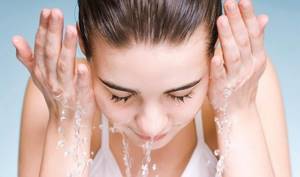
Perhaps you have some others. It is imperative to understand where the skin is oily, where the skin is dry, where it is normal, where the skin is sensitive, and where it is not very sensitive. If, after light and strong pinching or pressing, your skin quickly returns to its original appearance, there are no greasy spots, no shine, no peeling, then your skin is normal. Usually, different areas of the face have different fat content: the cheeks and forehead are oilier, and the nose, on the contrary, is drier, despite the fact that the wings of the nose are oily. But the skin of the lips is dry... And this is called mixed skin type. Unfortunately, just a product for mixed skin types is not the answer; each skin type must have its own care!
Educate yourself, because everything is different for everyone.
2). The next action is that you need to reconsider all your cosmetics : look carefully at what skin your cosmetics and care products are for, and whether you are using them correctly. Do you really have oily skin and do you use cosmetics and products for oily skin or do you use something else? Do you have normal skin and do you use cosmetics for normal skin?! Be sure to check it out!
Find out the composition of your cosmetics, be sure to pay attention to how many synthetic substances are contained in your cosmetics. If you have previously had problems using cosmetics, be sure to find out which products contained which substances from those that you did not like and those that did not suit you. Maybe some substance in this product did not suit you?
3). Try cleansing your face as I said above - hot water -> cleansing -> cold water.
This minimum alone will help cleanse your skin and remove the first two points: pimples and blackheads! If you want to know how to get rid of all the other problems that we discussed in the first chapter, please look at my blog, look at the articles, look through the information, ask your questions, I will definitely answer. Or I’ll tell you in future articles.
And I assure you, a beautiful woman with beautiful skin is much better than one with problem skin.
Articles recommended for you:
- Natural juices to protect women's beauty and health
How to defeat and prevent excess weight: reasons
Endometriosis - symptoms, causes and treatment
Irritability and stress - could it be PMS?
Combination skin
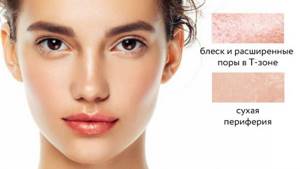
This type of skin is most common. As a rule, the combination type is characterized by signs of oily skin in the T-zone - in the forehead, nose and chin. There may be enlarged pores, inflammation and oily sheen. Other areas of the skin, especially around the eyes and cheeks, are often prone to dryness.
How to care for combination skin
Taking care of combination skin is more difficult than other types: trying to reduce the activity of the sebaceous glands in one area can dry out another. And if you do not provide the periphery of the face with proper hydration and nutrition, wrinkles will appear there faster. Therefore, it is important to select care taking into account the characteristics of different areas.
Example of a care plan
- 1. Washing - cleansing gel for washing 2. Toning - rejuvenating toner with niacinamide 3. Moisturizing - cream-corrector for facial skin prone to redness 4. Intensive care (1-2 times a week) - facial exfoliant paste with enzymes
How to avoid age spots?
When it comes to preventing age spots, the order of daily skin care and the protection of the epidermis from the harmful effects of ultraviolet radiation are important.
Products for daily facial skin care must include creams with SPF factor. The products must be used all year round on exposed areas of the body. In the summer heat, it is recommended to use SPF products above 30, in other months - creams with an SPF of at least 25.
During the period of active sun, products with retinol and vitamin A should be excluded from your beauty cosmetics bag. They provoke redness and irritation of the skin.
Skin types and conditions: what else is important to know
It should be understood that skin type and cosmetic problems that may arise are not the same thing. Long-term use of inappropriate cosmetics, environmental exposure, hormonal levels, nutrition and other factors can cause various skin imperfections, regardless of its type.
For example, acne or oily shine can appear not only on oily skin, and wrinkles - not only on dry skin. In cold weather, all skin types become drier than usual and require additional nourishment. Periodic imperfections are temporary and can be corrected, and skin type remains unchanged throughout life.
It is skin problems that can make it difficult to determine your skin type. And, as a result, it is quite difficult to choose suitable cosmetic products on your own. A cosmetologist will help you conduct a skin examination and prescribe further care.
Beautiful skin: working from the inside
Give up bad habits
Nicotine destroys collagen and elastin reserves. These proteins are the framework for the youth and beauty of our skin, they are responsible for its freshness and elasticity. That is why women who smoke experience the first signs of aging much earlier, unlike their non-smoking peers. In addition, during smoking, due to vasoconstriction and slow blood circulation, the skin does not receive beneficial substances and its “breathing” worsens. As a result, it gradually takes on a grayish or yellow tint, not very similar to the healthy and radiant look that you so strive for.
Alcohol, in addition to destroying the same collagen and elastin fibers, also dehydrates the body, which naturally affects the condition: it loses its former blush and healthy color, early wrinkles appear on it due to moisture imbalance, etc.
By the way, about moisture balance
Sufficient hydration is the key to beautiful and youthful skin. Therefore, to maintain water balance, you need to prescribe at least 2-2.5 liters of water daily. It is water, and not tea, juice or coffee - the body perceives all this as light food.
How to find out what skin type you have
Method 1. Visual inspection
For your convenience, we have compiled a table with the characteristic features of different skin types.
| Signs | Dry skin | Oily skin | Normal skin | Combination skin |
| Black dots | — | + | — | + |
| Oily shine | — | + | — | + |
| Enlarged pores | — | + | — | + |
| Peeling | + | — | + / - (depending on the season) | + / - (depending on the season) |
| Dryness | + | — | + / - (depending on the season) | + / - (may depend on the season or be a constant feature) |
| Frequent inflammations | — | + | — | + |
| Feeling of tightness after washing | + | + (if skin is sensitive) | + (if skin is sensitive) | + (if skin is sensitive) |
Method 2. Skin type test
Wash your face with your favorite cleanser and do not apply other skincare products. After two hours, take a paper napkin and apply it to your face. Then analyze what the napkin looks like - your skin type depends on it:
- There are no stains on the paper - dry
skin. - No more than three clearly visible oily spots in the forehead, nose and chin - combination
skin. - Faint spots on the forehead, nose and chin are normal
skin. - Up to five oily spots in different places - oily
skin.
What face is considered beautiful on a man?
Of course, men have different priorities: a heart-shaped face does not work for them. Then which male face is considered the most attractive? What shape allows you to emphasize strength and courage?
There is also an answer to this question: the most beautiful face of a man is a pentagon, which is made up of a wide forehead, clear cheekbones and a strong “strong-willed” chin. Research shows that this type of face indicates active production of testosterone (by the way, women read this information subconsciously).
And, of course, both women and men need smooth, fresh skin, the absence of wrinkles, age spots, harmonious, regular features and a friendly expression on the face of a person who is confident in himself and his attractiveness.

George Clooney

Tom Cruise
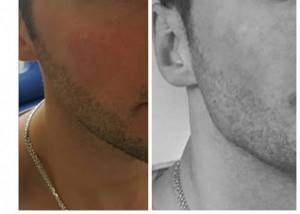
Augmentation of the angles of the lower jaw with fillers.
